Review: Women take center stage as the curtain rises on a San Diego art museum
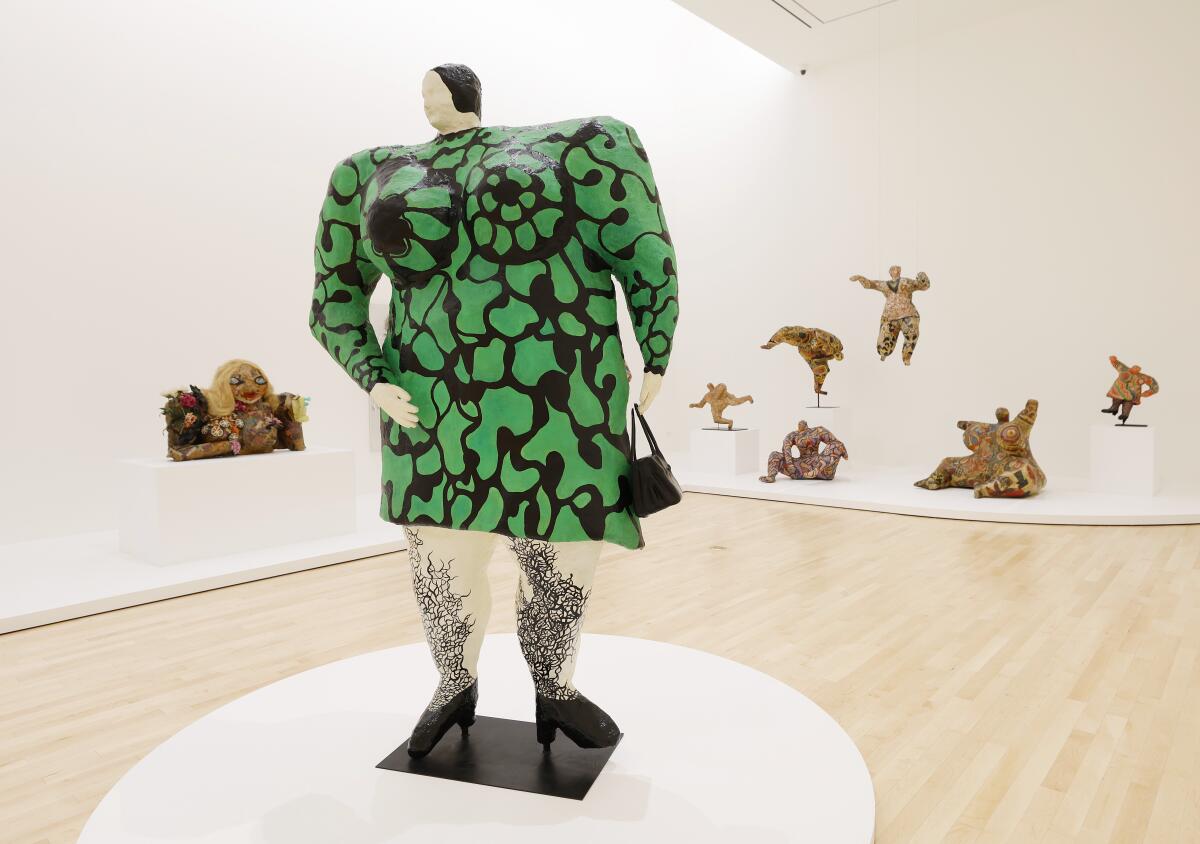
LA JOLLA — When an art museum opens a new, expanded or renovated building, all attention reasonably focuses on the architecture.
Bricks and mortar — or travertine and glass in the case of the new, expanded and renovated building at the Museum of Contemporary Art San Diego, opening to the public Saturday — stand front and center. Construction takes time (in this case at least five years), lots of money ($85 million, as well as an additional $20 million to bump the endowment), a thousand and one decisions (both grand and humble), plus complicated teamwork.
Toss in development considerations of the California Coastal Commission, and it’s — complicated.
This is the building’s fifth major transformation since World War II, having begun life in 1916 as a seaside residential villa designed by Irving Gill, the pioneer Modernist. Each change established a new public face for the institution. By now the façade gobbles up a stretch of one main drag in this town, backed by a spectacular view of the Pacific Ocean.
Happily, the vital motivation for this ambitious iteration does not get lost: For the first time, the sustained level of impressive quality in the museum’s permanent collection is manifest. The collection stands out — almost as a surprise.
And that’s not all. In a welcome development that typically gets more lip service than action in American art museums, almost half the artists whose work is on permanent view — 40% — are women. Southern California has been an epicenter of art’s critically important feminist revolution since the 1960s, and their collection representation is long overdue.
Women’s work is prominent throughout captivating galleries dedicated to Minimalism and Pop, Light and Space art, Conceptualism, art from Latin America and the San Diego/Tijuana border region, identity politics and more. Yes, the number should be at least 50%. However, while reliable comparative statistics among museums are hard to come by, I daresay MCASD’s representation of women is at least twice the national average.
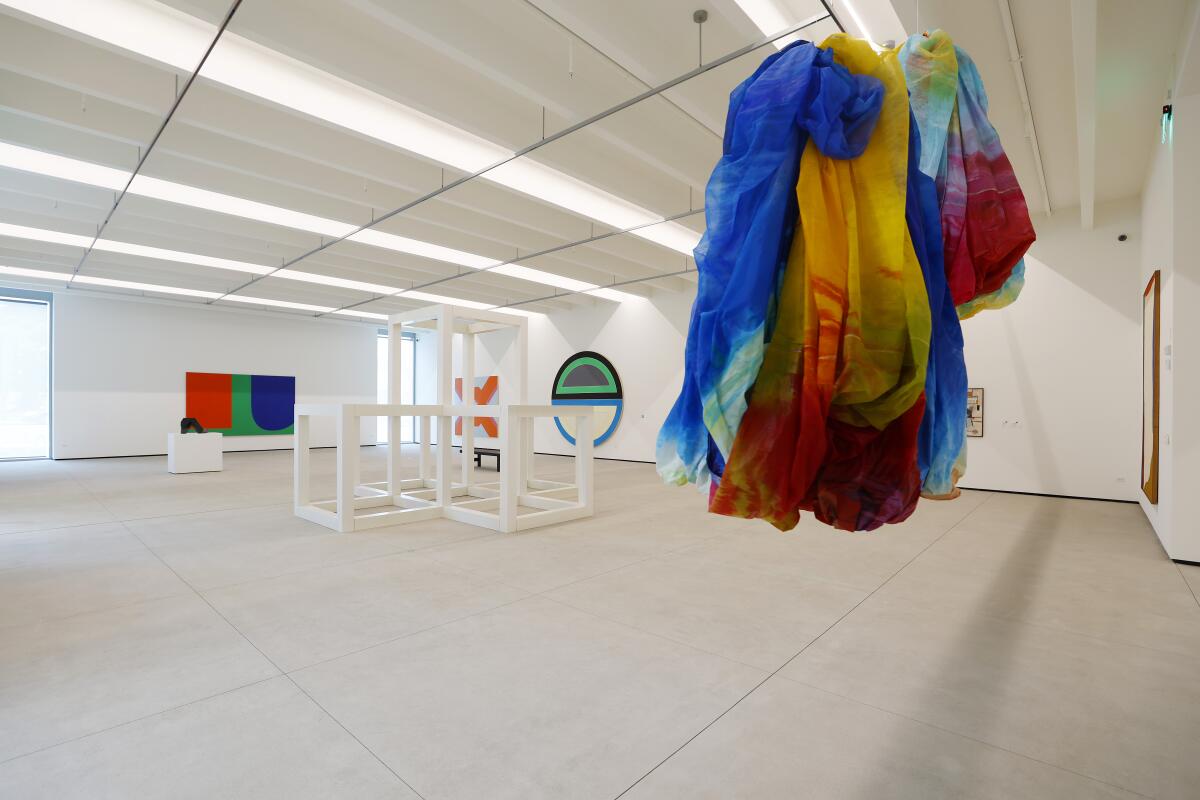
MCASD is one among many Southern California museums that historically have had scant gallery space for collection display.
In L.A., the Museum of Contemporary Art outgrew its buildings fast. The UCLA Hammer Museum recently added a welcome prints and drawings gallery, but its other permanent collection expansion plans have been disrupted by the pandemic — temporarily, one hopes. The Los Angeles County Museum of Art made the unfathomable decision to rebuild with less permanent collection gallery space than in the buildings it recently tore down.
A collection is a museum’s defining marker, its declaration of commitment to the art it believes to be worth lasting preservation, study and public presentation. At La Jolla’s public debut Saturday, some 200 significant paintings, sculptures, installations and video works by about 150 artists will finally be on long-term view.
That’s far more than has ever been possible before. The need has been recognized for decades. (It was a topic of discussion at least since the late 1970s, when I was a curator there and the collection small; today it numbers more than 5,000 objects.) Temporary exhibitions gobbled up most of the limited space. Now, with its square footage quadrupled, MCASD no longer hides its primary reason for being.
The museum’s director, Kathryn Kanjo, and her curatorial staff put the rebalancing front and center.
The first room features arguably the collection’s signature painting — Ellsworth Kelly’s great 1963 hard-edge abstraction “Red Blue Green.” Of 13 artists in that introductory gallery, however, eight are women. They include Ruth Asawa, Jo Baer, Helen Frankenthaler, Dorothy Hood and Miriam Schapiro.
The temporary exhibition program is following the lead. The inaugural show is “Niki de Saint Phalle in the 1960s,” a thorough look at the pivotal period of the French American artist’s work. (She died in La Jolla, where she moved late in life, in 2002.) The show was co-organized with Houston’s Menil Collection, where it was seen last September. This fall, “Alexis Smith: The American Way,” a full-career retrospective of the important L.A.-based artist, will round out the year’s major exhibition program.
Even MCASD’s small outpost at a train station in downtown San Diego currently features Yolanda López. It’s the first solo museum presentation of the Bay Area Chicana artist and activist, who died last year at 79.
New York-based architect Annabelle Selldorf designed the La Jolla project. She was faced with a complex site. On a steep, relatively narrow bluff overlooking the Pacific, she wrapped permanent collection rooms around 6,800 square feet of new temporary exhibition galleries featuring 20-foot ceilings.
Given the excavated hillside, galleries of various shapes and sizes on different grades could have been a confusing warren of upstairs/downstairs rooms. With few exceptions, Selldorf was adept at creating sightlines between galleries, visually pulling a visitor along a circuitous path.
Almost always, landscape glimpses through strategically placed vertical windows prevent feeling lost inside. You know where you are and where you should be going.
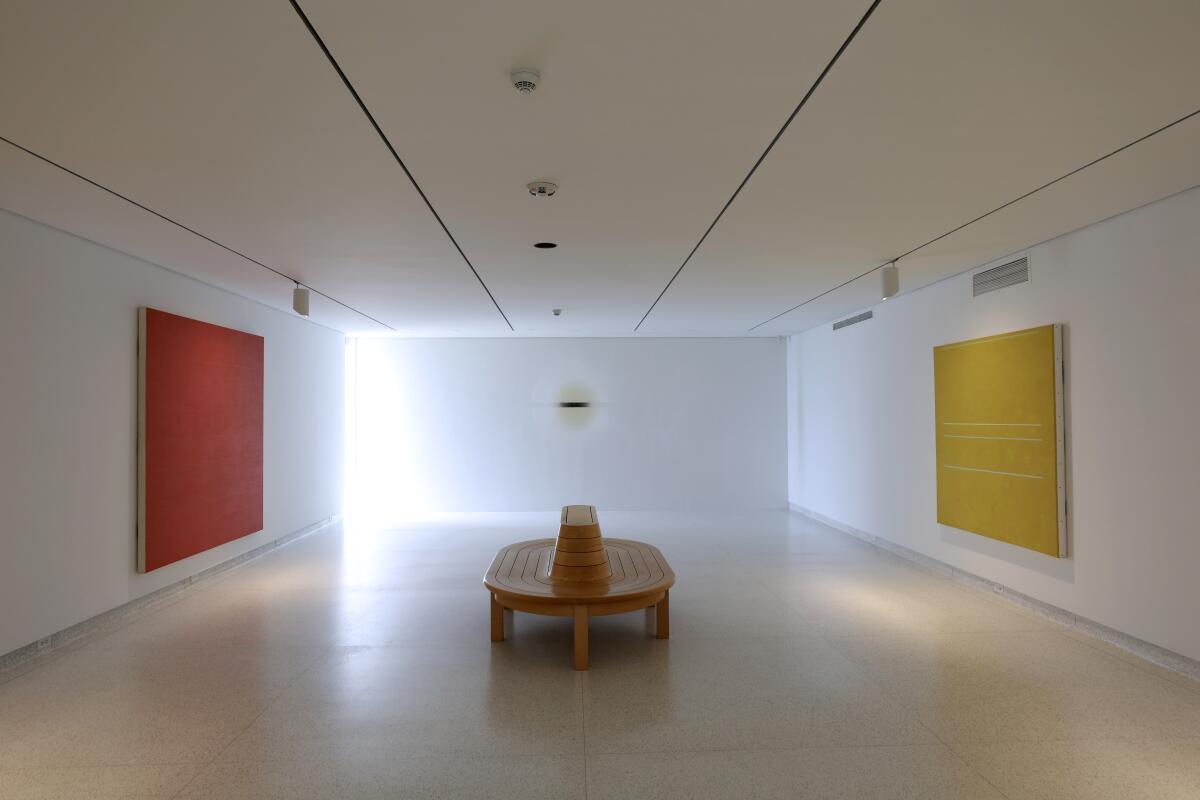
One big, spectacular skylighted room — formerly the museum’s lovely, underutilized, now unrecognizable Sherwood Auditorium — is of special note. It takes advantage of a large volume of beautifully diffused light to showcase a superlative collection of 1960s and 1970s perceptual abstractions known as Light and Space art (which were still being installed during a recent visit).
Geometric paintings by Larry Bell and Mary Corse; glass and plastic sculptures by Bell, Peter Alexander, Helen Pashgian, De Wain Valentine and Robert Irwin; and painted vacuum-formed wall reliefs by Craig Kauffman unfurl Southern California’s distinctive contribution to American art since the 1950s. On a darkened lower level, a major 1965 neon environment asserts the pivotal importance of sculptor Doug Wheeler to the evolving genre.
Elsewhere, an astonishing group of 12 works by Irwin, the Light and Space movement’s leading figure, charts much of his evolution in the second half of the 20th century. (Even the room’s bench was designed by him.) Starting with rarely seen Abstract Expressionist canvases from the mid-1950s, it’s a deep, dense tutorial in the art of seeing.
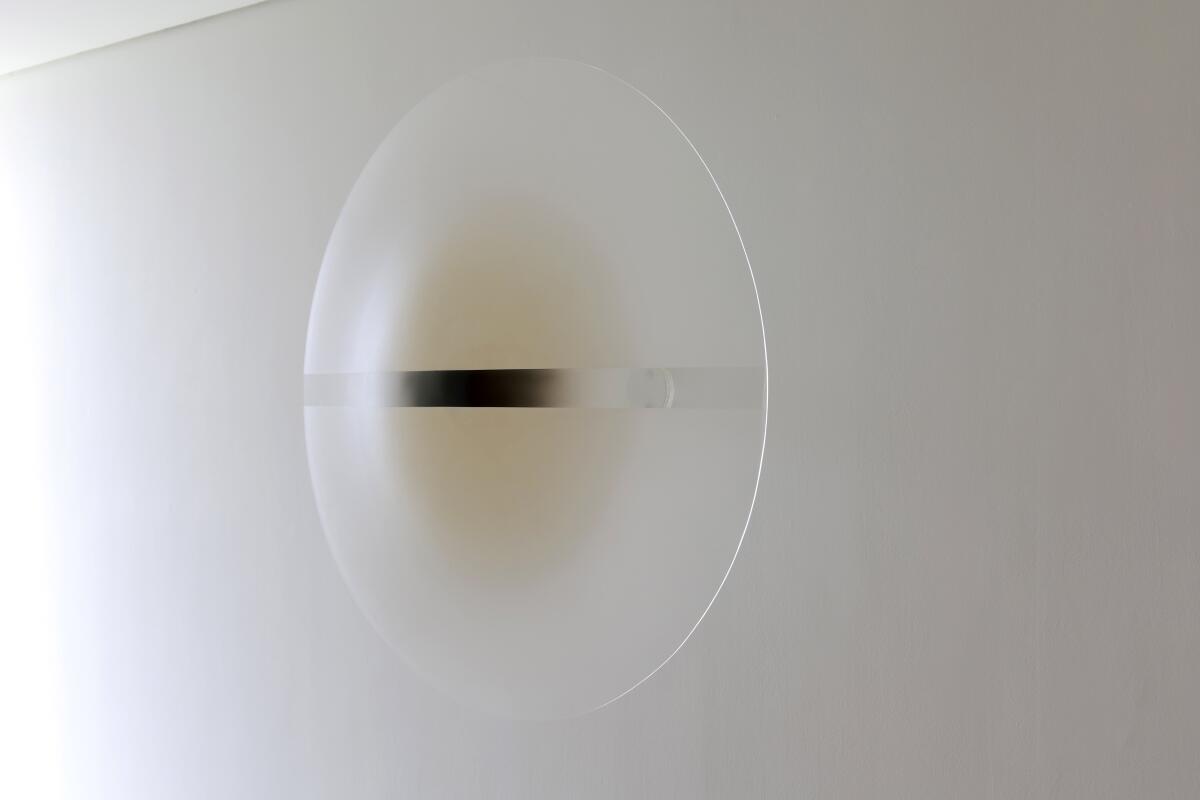
The selection needs a few things to be complete — and the museum does own another six Irwin works — but as perfect an installation as I’ve ever seen is featured: A 1969 acrylic wall disk dissolves before your eyes in raking sunlight, creating an inexplicable black gash that hovers in the atmosphere. The preternatural phenomenon of this gash — a mysterious drawing in space — prepares one for the marvel in the next room, where the eye-boggling simplicity of precise apertures cut into existing sea-view windows makes thin air seem materially dense.
The development and power of Light and Space art is beautifully framed. Irwin, 93, has lived in San Diego for several decades, and his involvement with MCASD has been lengthy. Nothing close to this display will be found in any museum elsewhere — including the pivotal artist’s native Los Angeles, which is a shame.
The exhibition “Niki de Saint Phalle in the 1960s” assembles about 50 works, plus documentary photographs, a film and assorted ephemera. Curators Jill Dawsey and Michelle White, also responsible for the show’s informative catalog, focus on the two bodies of the artist’s most important work.
One she dubbed tirs séances — shooting sessions — in which Saint Phalle loaded a rifle or pistol and took dead aim at canvases covered with found objects and plaster embedded with paint-filled balloons, yogurt and ink containers, eggs and other fluid materials. When she (or an invited shooter) blasted away, color exploded and ran over the ravaged surfaces.
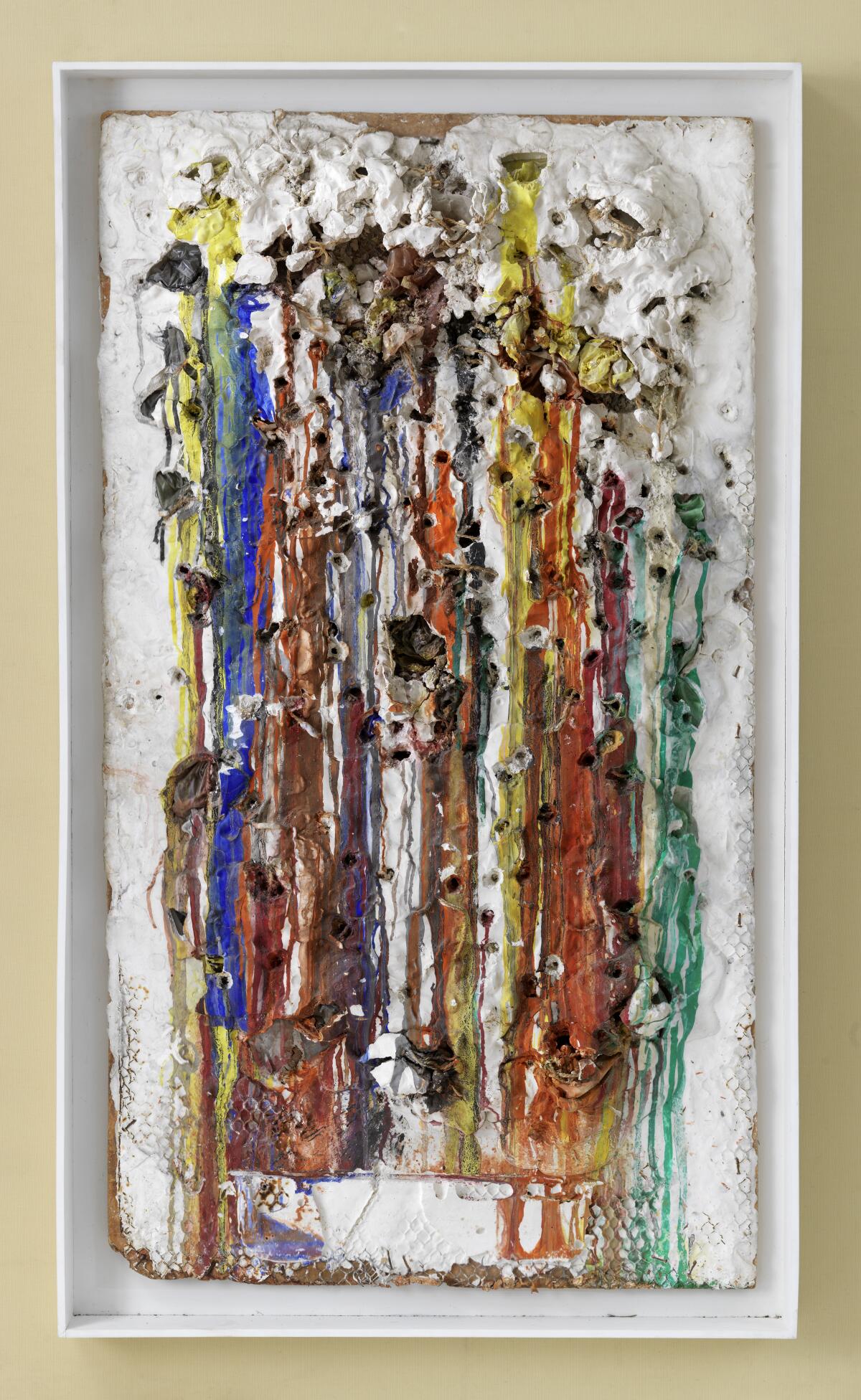
Two dozen shooting sessions were publicly performed in Europe and the United States, most in 1961 and ’62. Several took place in Los Angeles.
One was at a jazz club parking lot on the Sunset Strip, another on a Malibu hillside and a third inside a local warehouse. The two public shoots were witnessed by composer John Cage, painter Philip Guston, actor Jane Fonda, preeminent L.A. art critic Jules Langsner and fashion model Peggy Moffitt, among other notables.
Later, Saint Phalle made voluptuous, decorated figural sculptures she dubbed nanas, rude French slang for girls. Some are collaged paper and fabric, while others are painted polyester resin.
Another, documented in a film, was a gigantic, brightly painted, now-legendary temporary sculpture 80 feet long and 20 feet high. “She — a Cathedral” was made in 1966 with Swedish artist Per Olof Ultvedt and Swiss artist Jean Tinguely, Saint Phalle’s partner. Up to 150 visitors at a time were invited to enter the exaggerated nana’s reclining, pregnant body through her spread legs. There they encountered industrial innards of whirring mechanical gears and machinery, as well as assorted tableaux of daily life.
Surely such frank celebration of feminine libidinal power would have made the average moralizing misogynist apoplectic, which is another reason to admire it. The reason the sculpture was so large, Saint Phalle explained, “is because men are big and [nanas] had to be bigger to fulfill their ideas.”
The survey rightly takes issue with the prevailing view that, because she was an incest survivor — a childhood horror she revealed only late in life — Saint Phalle’s breakthrough art is best viewed through that psycho-biographical prism. The shocking ordeal was certainly powerful and consequential; yet, as with youthful traumas endured by artists from Artemisia Gentileschi to Frida Kahlo, that narrow focus robs a woman of any independent agency within larger cultural and intellectual engagements. Her art is reduced to an emotional response to a lacerating event.
The exhibition and its catalog don’t say so, but another aspect of Saint Phalle’s life before she became an artist does seem to me worth emphasizing. A beauty, born into an aristocratic French banking family and largely raised in New York, she became a fashion model at 17.
For the next eight years, Saint Phalle was hugely successful at the competitive job. Landing covers and spreads for major magazines including Elle, Life, Harper’s Bazaar and Vogue is no small achievement. Saint Phalle’s breakthrough art should be seen in direct relation to it, rather than merely as an unshackled reaction to repressed trauma.
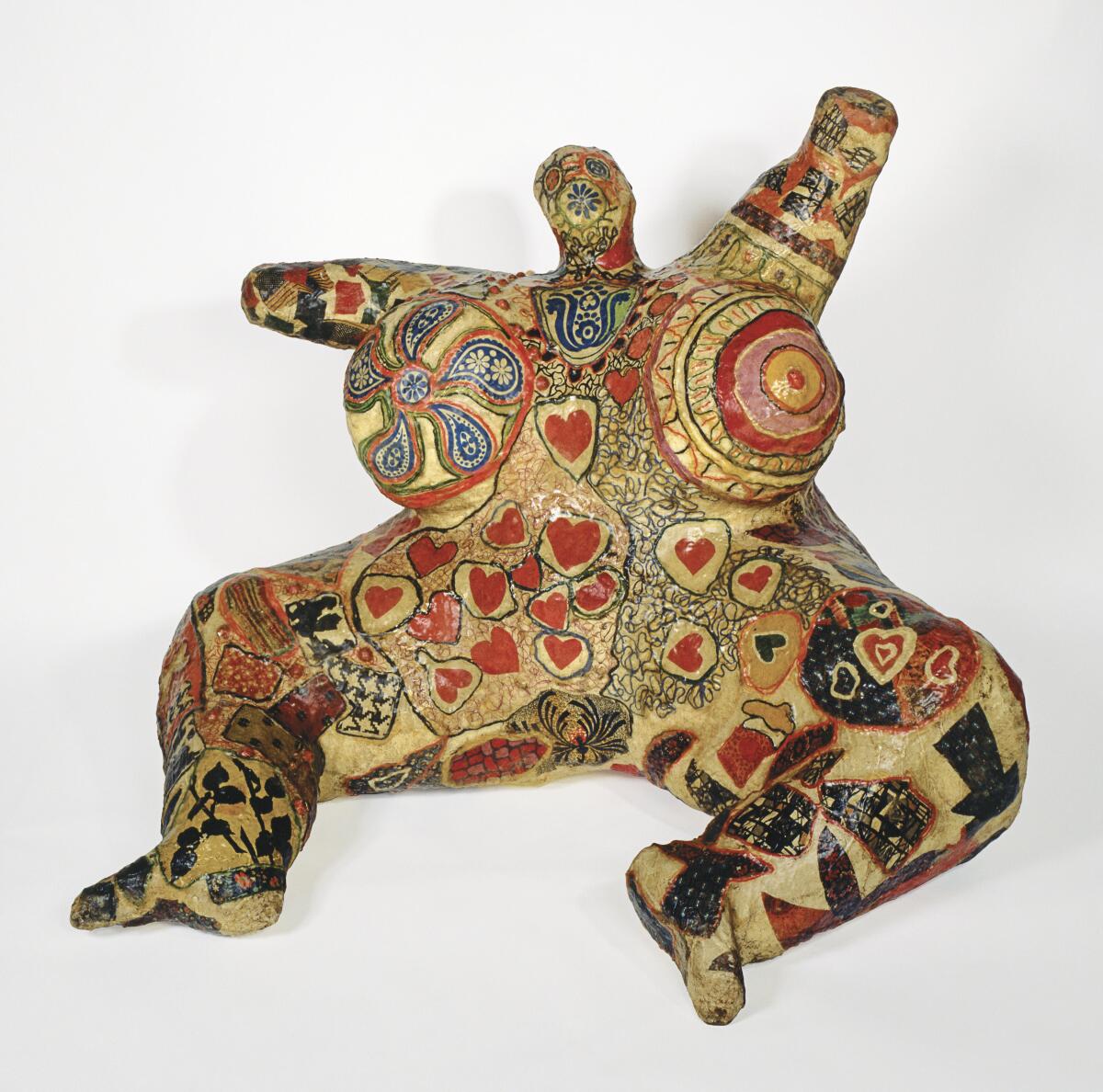
Tirs séances — shooting sessions — are what fashion models do, after all, working with photographers’ cameras rather than guns. Likewise, the French word for fashion model, mannequin, describes a decorated female form.
Modeling at its core is aesthetically entangled deep within a culture of systemic sexism, which is a subject Saint Phalle took on in her art. And language puns are a nucleus of the Dada attitude she embraced as the only female member of the 1960s Parisian art movement called New Realism. Her work transformed a fashion shoot into an art shoot and a mannequin into a nana, and it did both in intellectually savvy and culturally revealing ways.
Self-taught, Saint Phalle chose not to go to art school. When she switched roles to set modeling aside and become an artist, she took her life with her to make paintings and sculptures that reflect a serious, searching and critical sensibility. Her ’60s achievement was relatively brief but acute. The sharply focused exhibition looks terrific, especially in the context of MCASD’s generous permanent collection.
MCASD reopens
Where: Museum of Contemporary Art San Diego, 700 Prospect St., La Jolla
When: Reopens Saturday, then open Thursdays-Sundays
Temporary exhibition: “Niki de Saint Phalle in the 1960s,” through July 17
Admission: $15-$25; visitors 25 and younger are free
Info: (858) 454-3541, mcasd.org
More to Read
The biggest entertainment stories
Get our big stories about Hollywood, film, television, music, arts, culture and more right in your inbox as soon as they publish.
You may occasionally receive promotional content from the Los Angeles Times.











